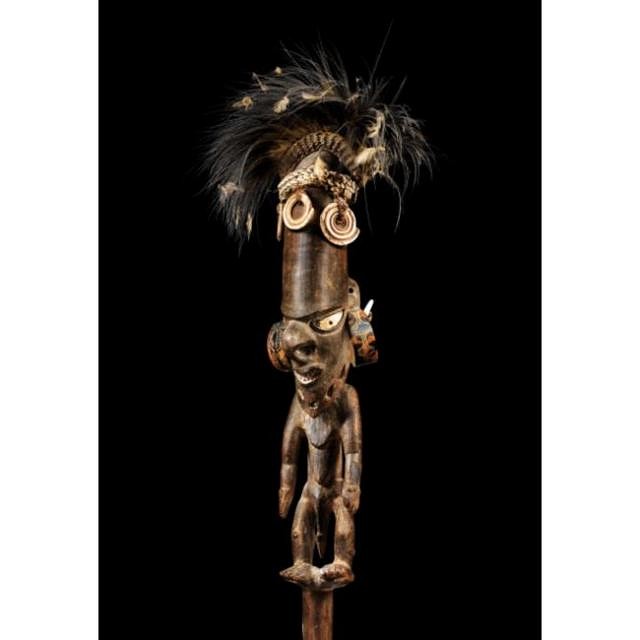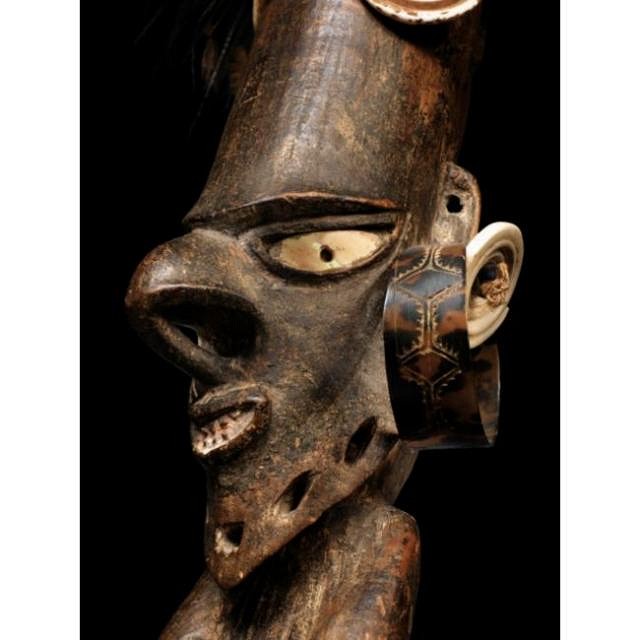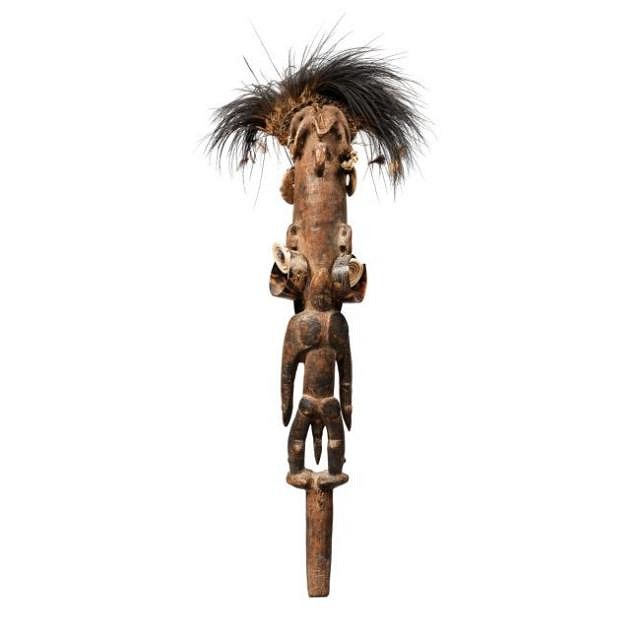P

Paipo
Member
Aotearoa / NZ
Joined: Jun 22, 2006
Posts: 1886
|
P

There's one of these in the Sotheby's catalogue that came online today and though you might like a look. Estimate €400,000-500,000! (that's US$632-790,000 :o )



An exceptional Biwat flute stopper, Yuat River, Lower Sepik, Papua New Guinea
Eddy A. Hof (1914 - 2001) acquired items for his significant collection of Oceanic art from the beginning of the 1950s onwards, primarily from Dutch missionaries who had stayed in New Guinea.
Wusear figures, with their deliberately aggressive features, were used by the Biwat to seal the ends of their large sacred bamboo flutes, which are known as haiyang. These flutes (which are actually resonance chambers, with the player modulating the sound by using his voice and covering the mouthpiece with his fingers) are of great social, ceremonial and religious significance. The carved figures are believed to be the children of the spiritual mother crocodile, Asin, who enabled initiates to be symbolically reborn by swallowing them and then spitting them back out as fully fledged adults (Meyer, 1995: 211). According to Terri Sowell, a distinctive feature of the Biwat's initiation rites was that in contrast with other Sepik groups 'both girls and boys were initiated and gained the right of access to sacred objects and beliefs' (in Friede, 2005, vol. II: 104).
Meyer (ibid.) considers the Biwat's depiction of the human figure to be 'the most powerful and most aggressive of all the art styles of New Guinea'. The Biwat were traditionally feared both for their skill as warriors and for their cannibalism (ibid.). As well as their powerful appearance, these figures present the highest level of elaboration in terms of their conception and decoration. The offered figure is one of the most exceptional examples of its kind, distinguished by the contrast between its powerful appearance and the finesse of its features, the representation of the tortoise carved on the back, and by the richness of its ornamentation.
See Friede (2005: 164-165, no. 137) for a flute stopper from the Jolika Collection in the de Young Museum, San Francisco, which shares the rare and distinctive feature of an animal carved in low relief upon the back.
Yours is looking great so far - the stance/ posture and proportions are spot on!
|



